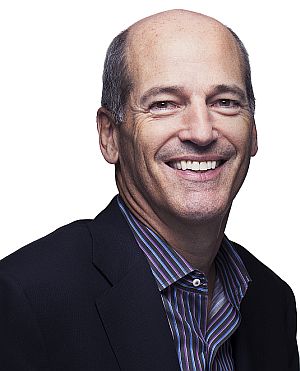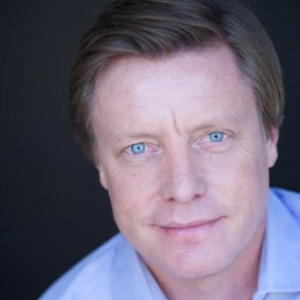“We believe we can compete in this space because we come from such a position of strength.”
That was Pandora CEO Brian McAndrews, replying to the first question during the Q&A portion of Monday’s conference call announcing the acquisition of Rdio, and Pandora’s expanded strategic plan. At many points in the Q&A, McAndrews and CFO Mike Herring circled back to Pandora’s large existing customer base, and the company’s immense data knowledge about its users. As Pandora plans to radically diversify its service platform and revenue potential by adding on-demand interactivity in 2016, its executives pointed to those assets to quell investor curiosity about how it will succeed in a crowded market.
How to Compete in On-Demand?
The questioning started with Michael Graham of Canaccord Genuity, who wondered how Pandora would differentiate its yet-to-be-built service in a field populated by mighty competitors Spotify, Apple, and Google.
Brian McAndrews emphasized existing audience and data. “We are the only platform that monetizes as effectively as we do, and has the data we do — 60-billion thumbs, 9-billion stations created. It’s a core growth opportunity. We believe we have a great opportunity to build a full slate of new offerings.”
Speed of Execution
Some investors wondered why Pandora spent $75-million to acquire Rdio assets instead of building a new platform from scratch. McAndrews said it was a question of speed. “It’s important to execute as quickly as possible. This will significantly accelerate our timing. We’re bringing on people and technology that will help us avoid mistakes.”
That said, the timeline is for the on-demand service to be unleashed well into 2016.
What about on-demand music licenses? That question was clearly in the minds of investors. McAndrews noted that Pandora would start from scratch in that effort. “Licensing deals are not transferable; that is standard. We are not operating the [Rdio] business; so we don’t need the licenses at this time. We’ll work on getting those licenses as we roll out the product.”
While Pandora (and the whole webcasting industry) awaits a royalty-rate ruling from the Copyright Royalty Board (CRB) by end of the year, CFO Mike Herring said that Pandora’s plan hedges against both possible extreme outcomes — higher or lower cost of music. “No matter what the CRB outcome, this strengthens our ability to add significant revenue streams to the business.”
What Does Rdio Bring?
Herring also noted that the Rdio acquisition accelerates product strategy that was already in motion, and that Rdio’s assets will be useful. “The plan to diversify our product footprint and go international has always been part of our plan. the assets, back office and product assets, deliver on both those promises. Rdio was an international platform in over 80 countries, and has the back-office systems to administer direct royalty relationships. We gain that expertise and technology way ahead of how long it would have taken to develop internally.”
Pandora will migrate a “significant number” of Rdio employees to Pandora, but not the CEO, Anthony Bay. “In terms of management, we are bringing on a number of people,” McAndrews said. “Anthony is not one of them. Anthony will stay, winding down the business, basically.”
One investor questioned why Pandora did not acquire Rdio outright, and whether that decision was related to the non-tranferability of music licenses. McAndrews denied that: “It had nothing to do with the licenses. It was because the business was financially challenged and would have been a drain for us. It would also have been a resource drain, toward a business we didn’t intend to continue.”
The message is loud and clear: Pandora has zero interest in Rdio brand value, or in turning around a doomed business.
The Thorny Question of Music Licenses
Investors were clearly worried about the challenge of negotiating with labels for music licenses, perhaps in observance of the many leaks of negotiating disagreements in Spotify’s licensing renewal talks. The Pandora execs portrayed a process that is already in progress:
“It’s something we’ve been working on for quite some time. In the last quarter we’ve had significant steps in the direction. For example, the settlement of the pre-1972 lawsuit, in addition to the comprehensive, multi-year deal we did with Sony/ATV, the largest publisher. Getting the CRB process behind us will be a big step toward having the right conversations. We don’t have any deals to announce today, but we’re having the right conversations. We think we have an extremely valuable offer to make and a value prop to bring to labels and publishers. We look forward to working together to bring a product to market that serves labels, publishers, and listeners. There is work to be done.”
Measuring the Opportunities
As Pandora plans to build out an on-demand music platform, does that signal lowered confidence in the ad-supported business that Pandora has pursued single-mindedly to now?
“We still think Internet radio is a huge opportunity,” McAndrews asserted. “As the leader we will continue to invest in that and take advantage of that. We also see an incremental opportunity, in that some listeners want to have both. Why encourage them to go elsewhere, when they could stay within Pandora? So we see it as an additional opportunity, not a diminishing opportunity. That’s true globally too — there are some countries where the ad-supported business won’t be as strong. But the places we’d go first and see the most opportunity to increase our overall business are the countries where there’s a great advertising opportunity.”
A Better On-Demand?
It’s the job of investors to anticipate problems, and evaluate companies from a bearish viewpoint. Observing the balance-sheet difficulties of all competing on-demand services, one investor pointed out the inherent low margins of music services and asked how Pandora intends to succeed.
Mike Herring’s answer was along the lines of a better mousetrap. “We think we can actually provide on-demand in a way that is more user-friendly and easier to digest, creating a larger addressable market and likely conversion rates,” Herring said. “We know what people want to hear, can get them up to speed quicker, build libraries, build playlists using our recommendation technology in a way that is far superior to what’s available in the market.”
He also acknowledged margin realities, and said one solution lies in Pandora’s existing audience. “The on-demand business today is a relatively low-margin business — lower margin from a contribution perspective than the ad-supported business. That said, one of the reasons [other] businesses struggle is that they have to spend a lot of money to acquire customers, and convince them to convert. When you’re spending money on marketing, and doing deals with carriers to try to build a pool of people to convert, it’s hard to make up for that with low-margin products.”
He continued with a description of Pandora’s built-in advantage: “The advantage that Pandora brings is that we have a fantastic non-interactive ad-supported business that has a significant positive contribution margin in itself. Our ability to attract tens of millions of users who are happy to listen to tour service actually is a contribution margin positive, profitable business. We don’t need to make up customer acquisition costs to upsell, or cross-sell, into a subscription business, to make financial sense. We have a unique position of looking at subscription as an upsell or cross-sell, not as a core business where we have to justify acquisition costs.”
All This … and Staying the Course
Finally, with all the future-talk of an expanded Pandora offering, what of the legacy business? Will Pandora reduce its investment in the competitive thrust of taking advertising market share from traditional radio?
“It does not affect our core business,” Brian McAndrews stated. “We will continue to monetize and take advantage of the local ad opportunity, and the programmatic opportunity. We see these [new] businesses as complementary.”


